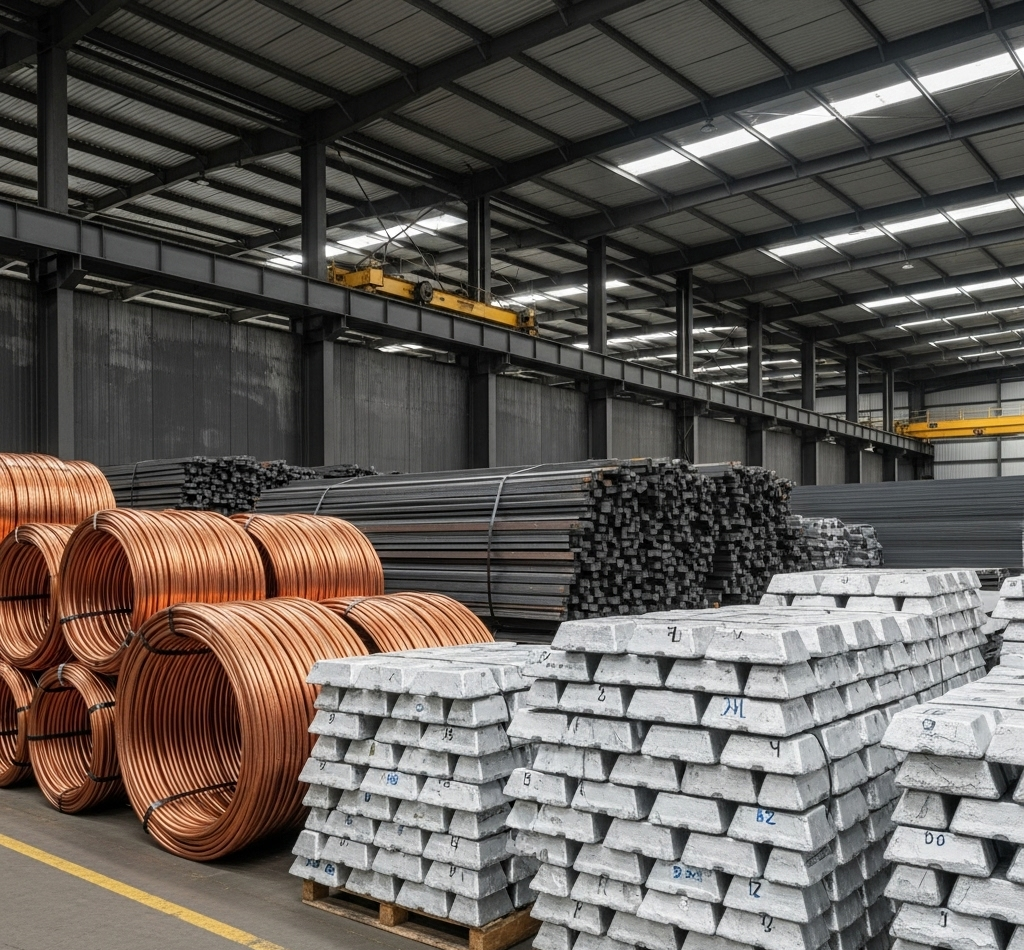
Commodity price volatility poses a significant challenge for businesses involved in metal supply chains. From mining companies to manufacturers, fluctuations in metal prices—such as steel, aluminum, copper, and rare earth elements—can disrupt budgeting, forecasting, and profitability. This blog post explores the causes of price volatility, its impact on metal supply chains, and practical strategies to mitigate risks and maintain stability.
Commodity prices are influenced by a complex interplay of global factors, including:
Supply and Demand Dynamics: Shifts in global demand (e.g., increased need for copper in renewable energy technologies) or supply disruptions (e.g., mine closures or geopolitical tensions) can cause rapid price swings.
Geopolitical Events: Trade tariffs, sanctions, or political instability in resource-rich regions can constrict supply chains, driving price fluctuations.
Currency Fluctuations: Since metals are often traded in U.S. dollars, changes in exchange rates can affect local pricing and procurement costs.
Speculative Trading: Futures markets and investor sentiment can amplify price movements, even when physical supply remains stable.
Environmental and Regulatory Factors: Stricter environmental regulations or unexpected weather events can impact mining operations, affecting supply and prices.
Price volatility creates several challenges for businesses:
Cost Uncertainty: Unpredictable raw material costs complicate budgeting and long-term contract pricing, squeezing profit margins.
Inventory Management: Companies may overstock to hedge against price increases, tying up capital, or understock, risking production delays.
Supplier Relationships: Volatile prices can strain negotiations with suppliers, leading to strained partnerships or disrupted supply agreements.
Customer Expectations: Manufacturers face pressure to maintain stable pricing for end customers, even when input costs fluctuate.
These challenges ripple across the supply chain, affecting everyone from raw material suppliers to end-product manufacturers.
To navigate these uncertainties, businesses can adopt a mix of financial, operational, and strategic approaches:
Futures and Options Contracts: Use commodity futures or options to lock in prices for metals like aluminum or copper. For example, a manufacturer might purchase a futures contract to secure a fixed price for steel deliveries six months out, mitigating the risk of price spikes.
Forward Contracts: Negotiate forward contracts with suppliers to agree on fixed prices for future deliveries, providing cost certainty.
Diversified Hedging Portfolios: Combine multiple financial instruments to balance risk, ensuring flexibility in volatile markets.
Multi-Sourcing: Work with multiple suppliers across different regions to reduce reliance on a single market prone to disruptions. For instance, sourcing aluminum from both North America and Asia can buffer against regional supply shocks.
Local Sourcing: Where feasible, prioritize local or regional suppliers to minimize exposure to currency fluctuations and international trade risks.
Just-in-Time Inventory: Reduce holding costs by aligning inventory levels with production needs, though this requires accurate demand forecasting.
Safety Stock Buffers: Maintain strategic reserves of critical metals to cushion against sudden price hikes or supply shortages.
Dynamic Inventory Models: Use data analytics to adjust inventory levels based on real-time market trends and price forecasts.
Long-Term Contracts: Negotiate long-term agreements with suppliers to stabilize pricing and ensure consistent supply, even during volatile periods.
Collaborative Forecasting: Partner with suppliers to share market insights and align on demand projections, reducing surprises in pricing or availability.
Flexible Contract Terms: Include clauses that allow for price adjustments within agreed-upon ranges, balancing risk for both parties.
Price Forecasting Tools: Use AI-driven analytics to predict price trends based on historical data, market signals, and geopolitical events.
Supply Chain Visibility: Implement digital platforms to monitor supply chain performance, track price movements, and identify potential disruptions in real time.
Scenario Planning: Run simulations to model the impact of price volatility on costs and operations, enabling proactive decision-making.
Price Adjustment Clauses: Include clauses in customer contracts that allow for price adjustments based on commodity market fluctuations.
Value-Added Differentiation: Emphasize product quality or innovation to justify stable or premium pricing, reducing pressure to absorb cost increases.
Commodity price volatility in metal supply chains is unlikely to disappear, given the global demand for metals in industries like renewable energy, construction, and technology. However, businesses can build resilience by combining financial hedging, diversified sourcing, and advanced analytics. By staying proactive and adaptable, companies can turn volatility into an opportunity to strengthen their supply chains and competitive edge.
© 2025 Lasso Supply Chain Software LLC
Get instant access to our report on the Top Procurement Trends of 2025.
Get instant access to our report on the Top Procurement Trends of 2025 by filling out the form below.
